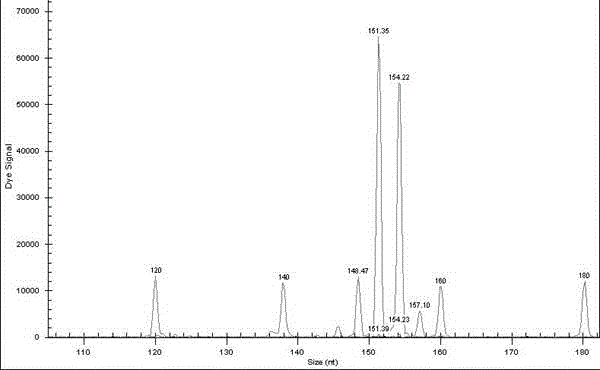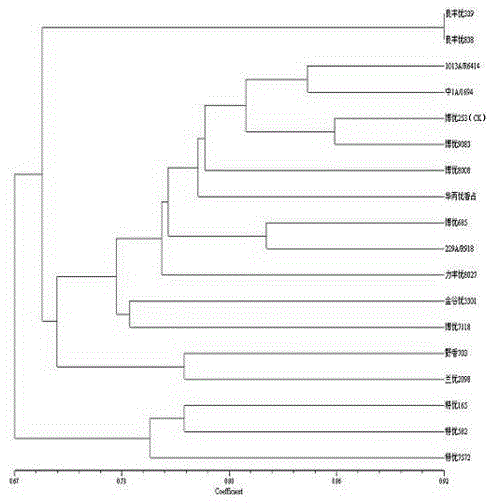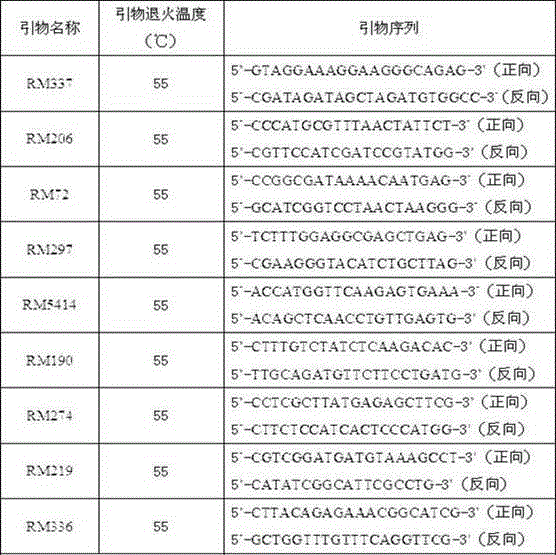Genetic analysis method based on capillary electrophoresis and SSR fluorescence labeling for rice
A genetic analysis method and capillary electrophoresis technology, applied in biochemical equipment and methods, material analysis by electromagnetic means, analysis of materials, etc., can solve difficult to achieve, difficult to integrate and accurately compare DNA data, and unable to accurately read fragments. size and other issues, to achieve the effect of reducing human error, accurate experimental results, and reducing workload
- Summary
- Abstract
- Description
- Claims
- Application Information
AI Technical Summary
Problems solved by technology
Method used
Image
Examples
Embodiment
[0029] Example: UPGMA Cluster Analysis of Rice Varieties
[0030] 18 commonly used rice varieties were selected as experimental materials
[0031] 1. Rice Genomic DNA Extraction
[0032] (1) Put the rice seeds at a constant temperature of 30°C to germinate and emerge. When 2-3 true leaves grow, take the young rice leaves in a mortar, add liquid nitrogen to grind them into powder, and put them into a 2 ml centrifuge tube ;
[0033] (2) Add 1.2 ml 65°C preheated SDS extraction solution (Tris-HCl 200 mmol / L, pH8.0; EDTA 50 mmol / L pH8.0; NaCl 500 mmol / L; 3% SDS) into the centrifuge tube , Shake the sample powder and the extract quickly to prevent them from forming agglomerates, put in a water bath at 65°C for 45 minutes, and shake gently 4-6 times during the period;
[0034](3) Add 200 μl KAc (5 mol / L, pH 4.8), mix well, and place in ice bath for 15 min;
[0035] (4) Centrifuge at 10,000 rpm for 15 min in a refrigerated centrifuge at 4°C;
[0036] (5) Take 800 μl of supernata...
PUM
 Login to View More
Login to View More Abstract
Description
Claims
Application Information
 Login to View More
Login to View More - R&D
- Intellectual Property
- Life Sciences
- Materials
- Tech Scout
- Unparalleled Data Quality
- Higher Quality Content
- 60% Fewer Hallucinations
Browse by: Latest US Patents, China's latest patents, Technical Efficacy Thesaurus, Application Domain, Technology Topic, Popular Technical Reports.
© 2025 PatSnap. All rights reserved.Legal|Privacy policy|Modern Slavery Act Transparency Statement|Sitemap|About US| Contact US: help@patsnap.com



